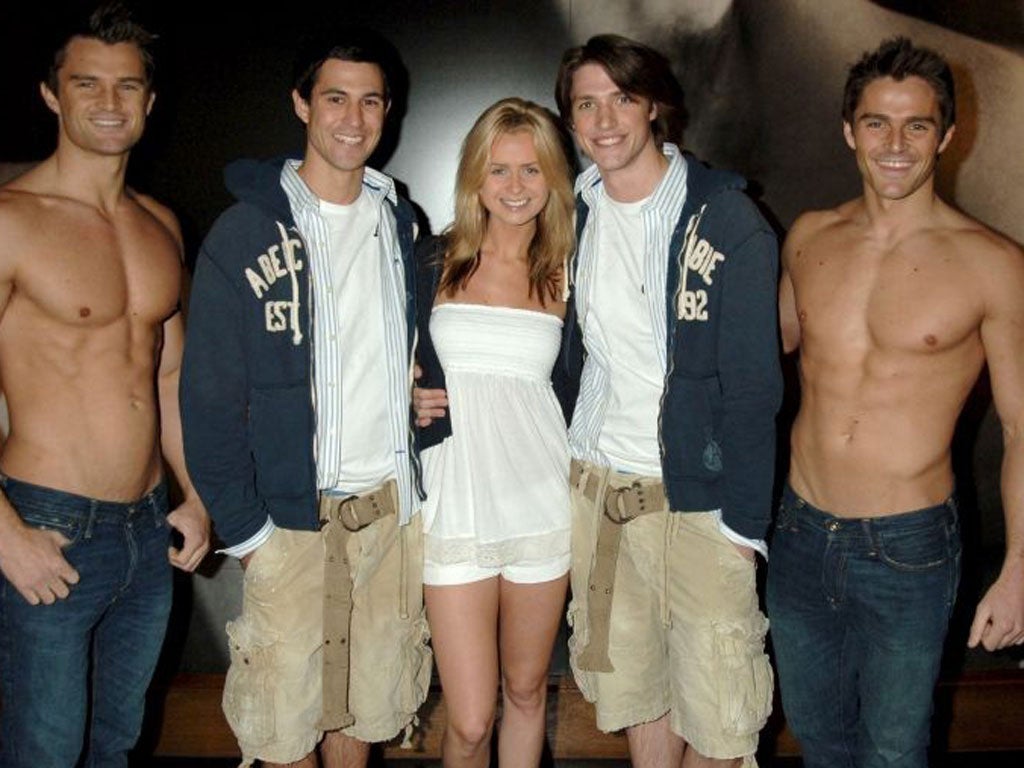The new Howard Hughes? Michael Jeffries, Abercrombie & Fitch 'Chief Eccentric Officer', dictates what underwear and flip-flops staff should wear on private jet
Outlandish demands made by US clothing boss on crew aboard his private jet revealed

If there is a perfect exemplar of the oddball American boss, Howard Hughes must be it. Among the maverick aviator's directives at his Hughes Aircraft firm, one stipulated the precise type of seat covers for the company's fleet of Chevrolets, according to an ex-colleague tracked down by Fortune magazine in 2005. On another occasion, Hughes is said to have mooted the construction of a missile testing range on his Nevada property.
But if new claims about Michael Jeffries, the 68 year-old head of the fashion retailer Abercrombie & Fitch are accurate, future historians might reconsider their nominee for the country's standout CEO – or chief eccentric officer.
According to a dossier of instructions disclosed as part of an age discrimination case brought by a former pilot, flight crew aboard Mr Jeffries's Gulfstream corporate jet were required to employ white gloves when handling silverware and black ones to lay the table, besides adhering to specific seating arrangements for his dogs – Ruby, Trouble and Sammy – depending on which ones were travelling.
It didn't stop there. The manual, first revealed by Bloomberg news, goes on to detail the uniform that had to be worn by staff, including, in what must be a sterling candidate for inclusion in the annals of corporate overreach, the brand of cologne (Abercrombie & Fitch 41) and kind of underwear for airborne men (boxer-briefs). And woe betide the steward who placed Businessweek magazine in the left side of the credenza. The dossier clarifies that, along with copies of Fortune and other august journals, it had be stored on the right hand side, without any inserts that might unceremoniously rain down on Mr Jeffries, according to partial copies which have appeared online.
The detail extends to the way crew had to address the Abercrombie boss, once labelled the Willy Wonka of the fashion industry by the online magazine Salon. According to excerpts: "When Michael, Matthew [Smith, Mr Jeffries's partner], or a guest make a request, respond by saying 'No Problem'. This should be used in place of phrases like, 'Sure' or, 'Just a minute'."
Flip-flops, meanwhile, were mandatory in-flight, and the crew had to check for fingerprints on ledges, cabinet doors, and elsewhere around the craft. The onboard playlist is equally precise: the crew were reportedly required to broadcast Phil Collins' hit "Take Me Home" over the in-flight intercom as the plane headed home.
The manual, reportedly customised with input from Mr Jeffries's partner, was among the documents in a 2010 case filed in the US by Michael Stephen Bustin, who piloted Mr Jeffries's Gulfstream from February 2008 until he was let go in December 2009. Mr Bustin, now 55, claims he was fired so he could be replaced with a younger pilot more in sync with Abercrombie & Fitch's youthful image.
The fashion retailer has dismissed the claims in court documents, according to the Associated Press, while the company's general counsel told Bloomberg that the pilot's case was without merit. Yesterday, when contacted about the allegations, Abercrombie declined to comment.
The business pays for four cabin crew provided by a management company, and doesn't itself employ pilots, according to an aircraft management agreement filed by Mr Bustin as part of the lawsuit.
The new disclosures come as Mr Jeffries, who, after taking charge in the early 1990s, had been widely credited with turning Abercrombie from an outmoded manufacturer of outdoor gear to a successful fashion brand for youngsters, is struggling to sustain its appeal in the face of changing fashion trends and its customers' tightening purse strings. The value of Abercrombie shares linger at around $32, about half their value a year ago.
This is not the first high-profile case featuring the company to hit the headlines. In 2004, Abercrombie, well known for its risqué advertising, paid out $40m to settle a series of cases which accused it of discriminating against minorities to maintain its all-white public image.
Subscribe to Independent Premium to bookmark this article
Want to bookmark your favourite articles and stories to read or reference later? Start your Independent Premium subscription today.

Join our commenting forum
Join thought-provoking conversations, follow other Independent readers and see their replies